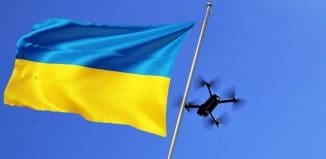Drug Cartels Can Now Spoof Patrol Drones Along US Border
This post is also available in:  עברית (Hebrew)
עברית (Hebrew)
UAVs have become a common presence in the US military, but they have also spread to other US law enforcement agencies like local police and border patrol. These agencies, however, use smaller drones than those used by the military, costing millions of dollars. Drones used by other law enforcement agencies are much smaller, due to the smaller budgets allocated to the acquisition of such vehicles. These small drones, unlike larger drones designed to military specifications, are far more vulnerable to hacking and location spoofing.
Using drones is considered a major upgrade and a real asset for the U.S. Customs and Border Protection agency, or CBP, on the US-Mexico border. But as the CBP has upped its drone patrols along America’s Mexican border, narcotics traffickers have responded with counter-technologies of their own.
“The bad guys on the border have lots of money and what they are putting money into is into spoofing and jamming GPS systems. We’re funding some advances so we can counter this,” said Timothy Bennett, a science-and-technology program manager at the Department of Homeland Security, which oversees CBP.
GPS spoofing is a trivial cyber-attack, which relies on sending GPS receivers fake GPS data. Each UAV has a GPS receiver, used to receive data from off-orbit satellites and navigate along the border, watching for illegal crossers. When it receives the wrong coordinates, the drone corrects course and leaves its normal patrol area, going to the section it thinks it should be at, based on the wrong coordinates.
Once the drone leaves the area of the GPS spoofing device, it then tries to correct again, going back to its proper patrol area. It follows this back and forwards process until it remains out of fuel and returns to base, or the traffickers safely crossed the border and turn off their jammers.
US’ Department of Homeland Security was unable to say just how often smugglers tried to jam or spoof border-watching UAVs. But Bennett said the attacks are hindering law enforcement abilities to map drug routes. “You’re out there looking, trying to find out this path [they’re] going through with drugs, and we can’t get good coordinate systems on it because we’re getting spoofed. That screws up the whole thing. We got to fix that problem,” he said.




























